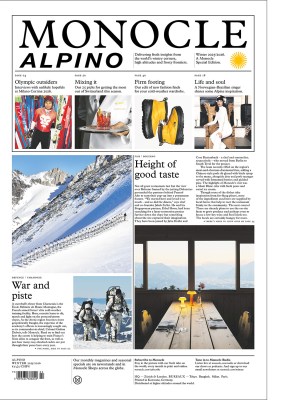Salone del Mobile
Interview: Iittala creative director Janni Vepsäläinen on rethinking Finnish glassware
Since 1881, Iittala has been a pioneering force in artistic and artisanal glassmaking. It’s a legacy that the Finnish heritage brand is continuing under the creative direction of Janni Vepsäläinen. After working abroad and in fashion for more than a decade (most recently as London-based JW Anderson’s senior knitwear designer), Vepsäläinen returned to Helsinki in 2023, trading knitting machines for glassware kilns. In her first year in the hot seat, she imbued Iittala with renewed creative vigour and she aims to keep up the momentum this year. We caught up with her to hear about her plans for the year ahead and the company’s home event, Helsinki Design Week.

Where can we expect to find Iittala in 2025?
We are heading to Tokyo for the first major retrospective of acclaimed Finnish designer Tapio Wirkkala. This exhibition, called Tapio Wirkkala: The Sculptor of Ultima, will mark Wirkkala’s 110th birthday. Held at Tokyo Station Gallery in April 2025, it will feature 300 of the designer’s works, including Wirkkala’s revolutionary Ultima Thule glass collection, originally created for Iittala in the 1960s. There will be an installation of more than 400 Ultima Thule glasses, showcasing Wirkkala’s iconic design inspired by the melting ice of Lapland.
How will you continue to evolve your vision, bridging the gap between respecting the past and innovation?
Our vision is deeply rooted in Iittala’s rich history and core values. From the beginning, the brand has aspired to be a pioneer of modern design and that spirit remains at the heart of everything we do. The glassworks in Iittala village are still the beating heart of the company, where design innovation is born on the factory floor. Our products emerge from the fusion of forward-thinking creativity and traditional craftsmanship. As we move forward, we are committed to reigniting Iittala’s legacy while embracing transformation. This vision is our guiding principle, shaping not just our designs but also the experiences that we create – whether through product innovation, events or artist collaborations.
Why is Helsinki Design Week, held in September, still important to you as a brand?
Helsinki is our home base. We take great pride in our legacy as a Finnish pioneer in premium glassmaking and design. Iittala has shaped the modernist Scandinavian design movement, empowering visionary designers. But our mission is to challenge conventions in Finnish design, fostering an inclusive approach to luxury in home décor.
See some of Iittala’s archive at ‘Tapio Wirkkala: The Sculptor of Ultima’ at Tokyo Station Gallery in Tokyo, Japan.
South Korean lighting firm ILKW’s bright idea
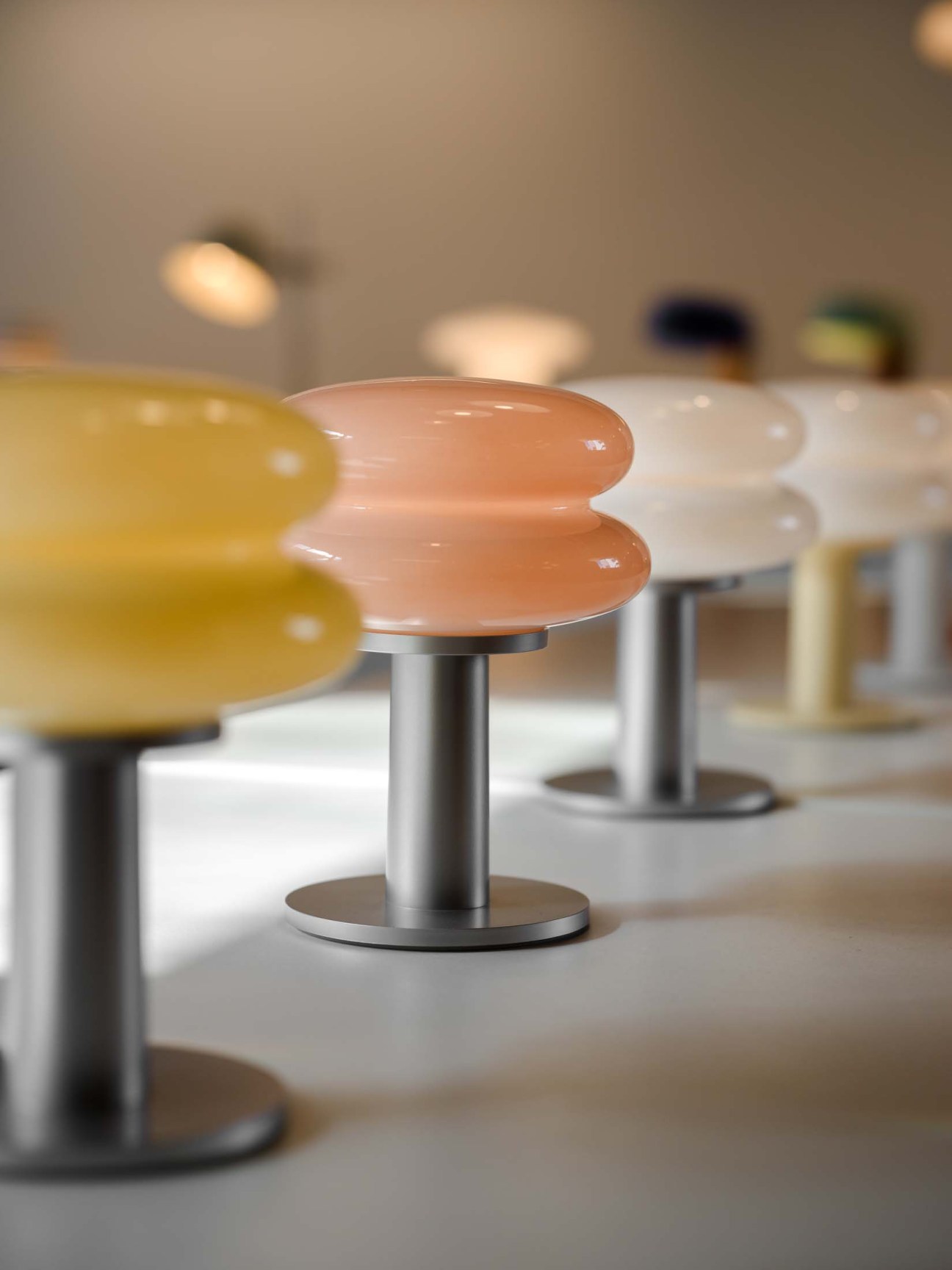
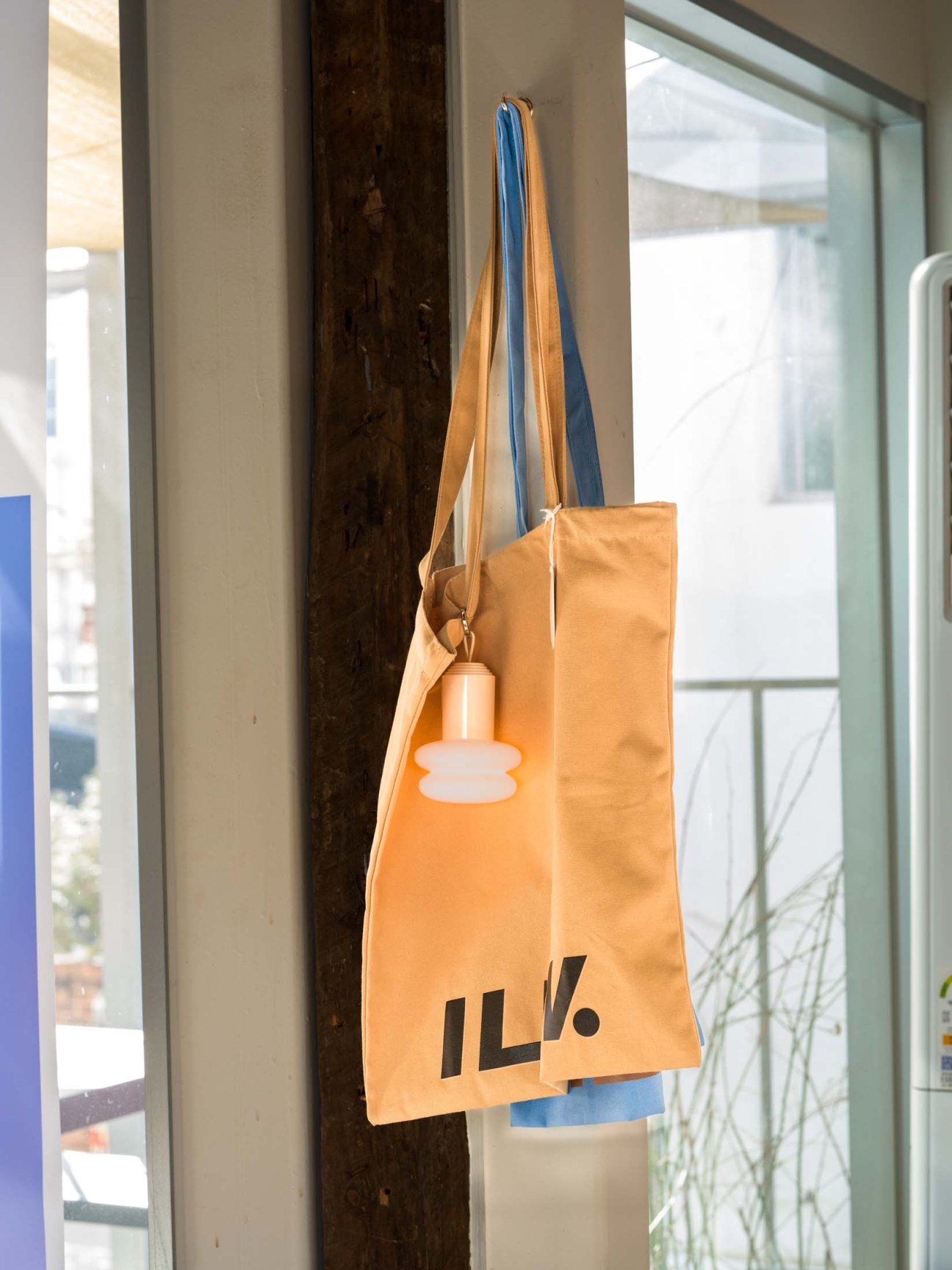
Established in 1962, South Korea’s ILKW, with its incandescent-bulb-manufacturing facility in the city of Daegu, is a brand that walks the line between the efficiency of LED lighting and the beauty of incandescent light. This balancing act began in 1998, when second-generation owner Kim Hong-do inherited the family company and embarked on a singular mission to establish ILKW as a globally competitive brand, dedicated exclusively to this light source. However, the ascendant tide of LED technology and the imperative of global sustainability demanded a strategic re-evaluation, sending him on a quest to redefine the company’s heritage.
“I took a transformative journey, traversing the vibrant creative milieu of New York and the artistic lineage of Aix-en-Provence, yielding pivotal insights,” says Kim, when Monocle meets him at the brand’s Hoehyeon-dong showroom in Seoul. “I resolved to reposition ILKW as a purveyor of ‘artistic design’.”
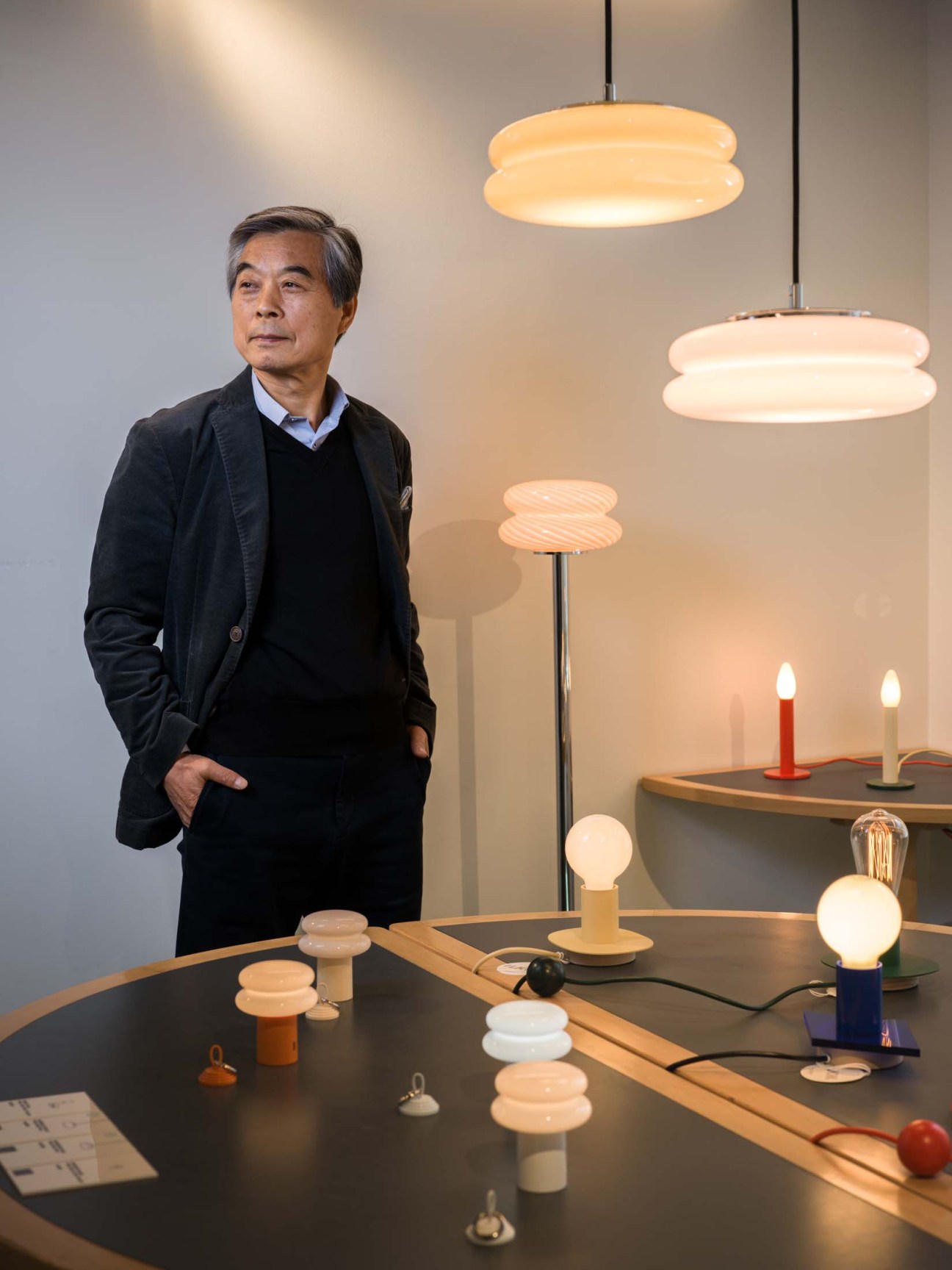
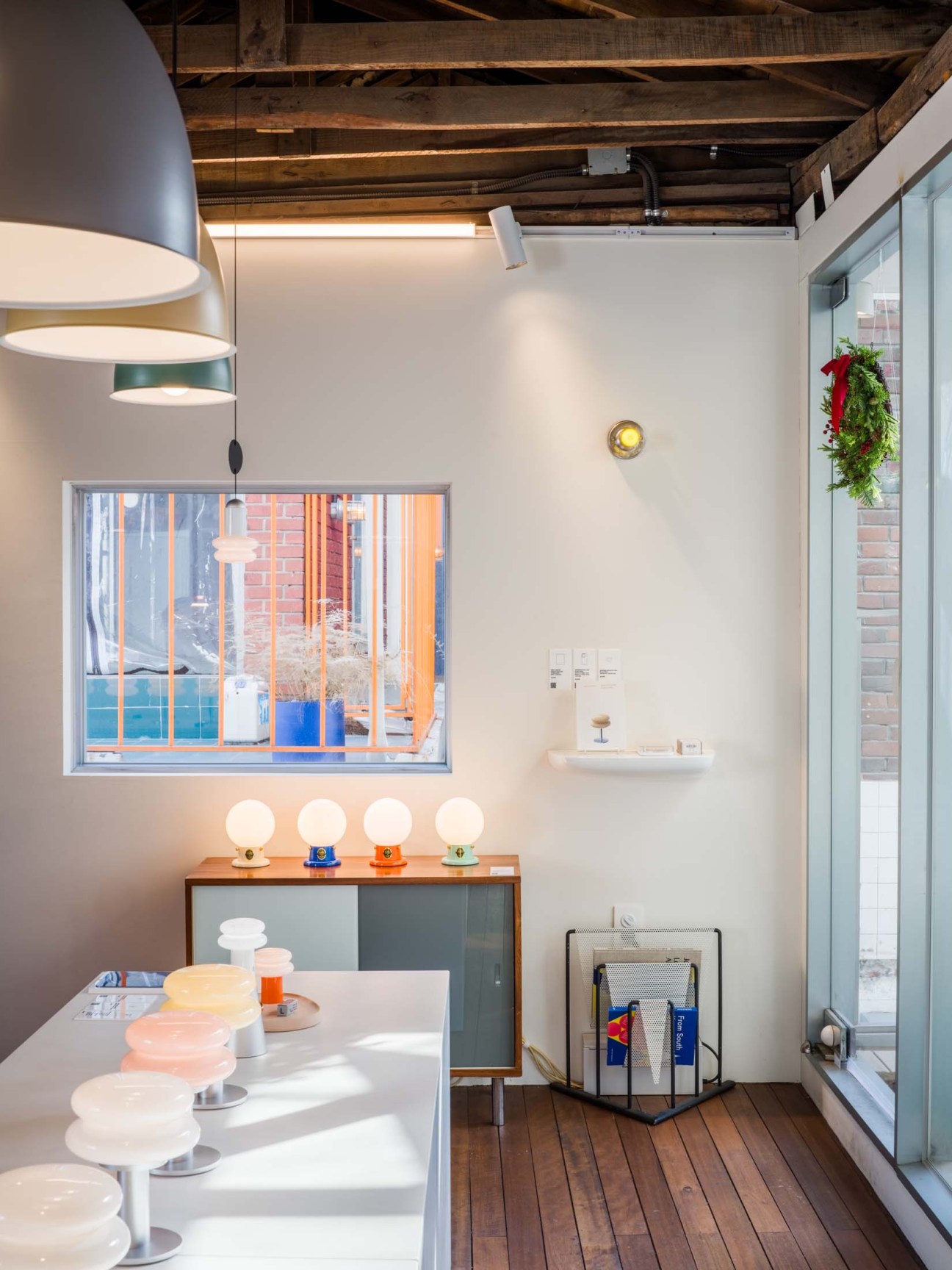
The owner’s ambition was to evolve slowly. Initially, it resulted in a collaboration with South Korean designer Kwon Sun-man, who came on board as creative director of ILKW in 2014 and redesigned packaging for the firm, outlining the benefits of the glow of an incandescent light source compared to the LED lighting available at the time (which was particularly harsh and still in a relative infancy). Momentum shifted again in 2021 when Kim’s son, Si-yeon, joined the enterprise, ushering in a new epoch of marketing and operational vision.
Under his watch, the brand launched its Snowman series, which delivers exquisitely refined LED light. Additionally, ILKW’s decade-long annual presence at Seoul Living Design Fair has cemented its growth from a light-bulb manufacturer into a comprehensive lighting brand. The Snowman series will be on show at Euroluce in Milan this year. But Kim is keen to stress that the priority is still making beautiful light, whether incandescent or LED sourced. “We’re committed to integrating aesthetic excellence into both our manufacturing processes and product design.”
British designer Lee Broom on lighting as a form of art
British designer Lee Broom is illuminating Salone del Mobile arm-in-arm with Lladró, the Spanish artisanal porcelain brand from Tavernes Blanques, near Valencia. This year’s collaborative offering, which features as part of Euroluce’s lighting exhibition in the Rho Fiera, is titled “Cascade”, a sculptural ceiling fixture and table lamp that are Broom’s first foray into porcelain. The spherical form is inspired by the delicate structures of paper lanterns.


“It really started with my visit to the Lladró factory,” Broom tells Monocle sitting in his particularly well-lit office in Shoreditch, London. “The way that Lladró manipulates the material appealed to me; particularly how they coax out a certain translucency. It was both unexpected and beautiful. I suddenly saw the material in a new way.”
As a result of this application of material, the piece has two looks. When turned off, the porcelain pendant takes on a traditional white colouring. Illuminated, however, each aspect hums with a warm orange light. “I am, ultimately, a modernist,” says Broom. “So when I designed it spherically, I knew it would be a challenge to marry up the material with the form. But Lladró has tamed an unpredictable material into something streamlined and classic.”
Broom’s three essential tips for good lighting
1.
Eyes on the scale
“I suppose, to be forward about it, the biggest flaw I see is that people can be afraid of the scale of lighting – particularly in the grander sense. In smaller spaces, the light shouldn’t have to equally be small. It’s a form of artwork. Lighting is supposed to fill the room: let it.”
2.
The ceiling is a surface too
“More often than not, homes have their main sources of light coming from the ceiling, yet they’re plain and underutilised. The walls and floors may be covered in fixtures and artwork and carpets, while the ceiling is left undecorated. Allow your ceiling lights to be sculptural and eye-catching.”
3.
Dim and dimmer
“It seems obvious, but it’s sometimes overlooked: all your lights should be dimmable. That sort of control, particularly of the temperature, is extremely important. It emphasises times of the day, it dictates mood, it changes the texture of a space.”
Profile: Japanese designer Kensaku Oshiro on bringing legacy pieces back to life
For designers, being able to revisit a project first executed almost a decade prior is a rare opportunity. The demands of the market can mean pursuing novelty over improving on existing ideas. But this year, Milan-based Japanese designer Kensaku Oshiro is expanding on the Leplì collection of stools, benches and ottomans that he first designed in 2016 for Poltrona Frau.
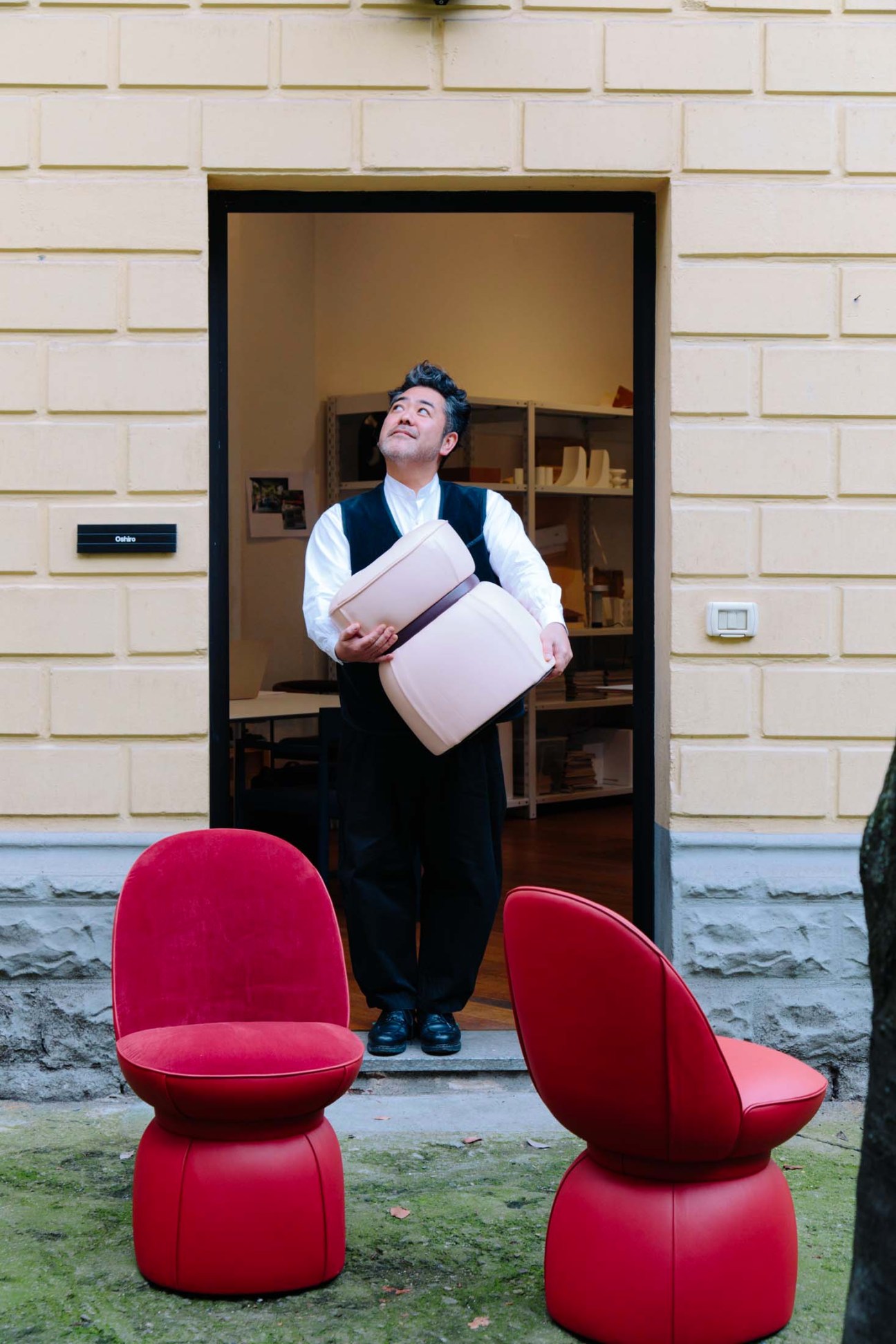

“Designing from the same project strengthens its identity,” Oshiro tells Monocle when we visit him at his studio in La Fontana, a northern neighbourhood of Milan. “I prefer to perfect a few products rather than work on 100 that might not be [as good]. Fewer items, fewer designs, fewer concepts – it works better for me.”
The new addition to the Leplì family is a chair and armchair – available in swivel, wheeled and fixed versions – that echo Oshiro’s original idea of the silhouette of a woman in a belted dress. (The original Leplì features a cinched middle, top-stitched seams and soft pin-tucks made from the leather that Poltrona Frau has become known for since the company was founded in 1912.) The sartorial inspiration is, of course, also apt in the context of Milan – a fashion capital as well as a centre for design.
The playful barrel shape of the new Leplì chair and armchair is accentuated by a thin leather belt at the point where the base meets the seat. The pieces are also available in Poltrona Frau’s wide range of high-quality leathers – derived from the food industry – that can be rendered in a single-block hue or combined according to taste. “Leather is one of the oldest materials,” adds Oshiro. “I see it as a very Italian material and then I combined it with my Japanese point of view which is to keep only what is essential.” It goes to show that playing the long game can pay off.
Via Alessandro Manzoni, 30, Milan
poltronafrau.com
Why Madison Avenue is attracting a new design-focused crowd
New York’s Madison Avenue, historically the home of America’s greatest advertising agencies, is attracting a new crowd. In recent years, the area has become a design hub, with a string of furniture showrooms from brands that are taking advantage of larger spaces and more affordable rents. “In New York, it’s a new era,” says Roberto Gavazzi, the CEO and president of the Boffi-DePadova group. The Italian company is one of many that have relocated here from SoHo.
“It’s a much more comfortable solution for our customers to walk to Madison Avenue and find all of the design shops there,” he says. “Having these companies close together in one area also makes it very easy for an architect or developer.”
Last year, the Italian furniture leader unveiled its new three-storey shop on Madison Avenue. The brand has had a presence in New York for decades but after leaving SoHo because of excessive rents, it moved uptown, settling in a 1,800 sq m space that was formerly a bank. “We decided to be among our colleagues,” he says. Fortunately, Boffi found itself among like-minded neighbours, such as Italian furniture companies Natuzzi and Rimadesio.
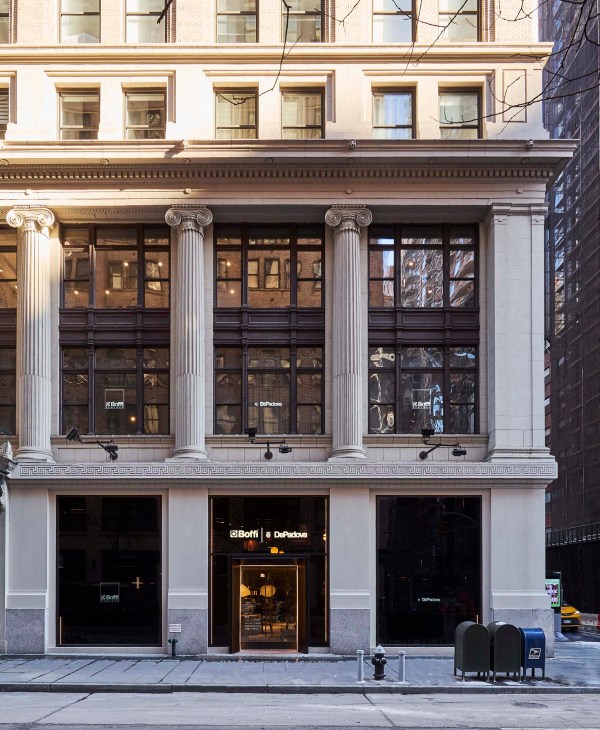
Considering the US is one of Boffi’s biggest markets, doubling down in the city made sense. Though bricks-and-mortar retail dwindled during the pandemic, people were still buying, acquiring pieces for the living spaces that they found themselves trapped in during lockdown. “The market went down for a while but people started to reinvest in their houses because of the obligation to stay home,” says Gavazzi. Now, retail is back and booming again. “It’s a fairly good investment,” he says. “New York has always been a successful showroom [for us] and it [has also] helped us to open in the rest of the country.”

Not only is the new showroom more affordable than the previous space but it’s larger, so they can showcase both Boffi and DePadova products. It’s more beautiful too, with a historic façade and giant windows that allow light to flood into the loft-like space. “We don’t want to be perceived just as a typical showroom; this is also an architectural space,” says Gavazzi, who enlisted his creative department to redesign the four levels it occupies. The shop has more of an apartment-style feel, with furniture that has been arranged in a way that allows clients to imagine how it would look inside their homes. “It feels very New York.”
Interview: Design Week South Africa curator Zanele Kumalo
Zanele Kumalo is the curator of Design Week South Africa, a celebration of design that takes place every October across Johannesburg and Cape Town. Here, we talk to Kumalo about providing a platform for African creatives, increasing access and growing in influence.

Why did you decide to get involved in Design Week South Africa?
When I worked in magazines I always tried to amplify voices that weren’t given space. [Now] what drives me is helping young creatives find a firmer footing in places where they haven’t had access. There’s such a wealth of talent in this country, so highlighting creatives makes me happy.
How will Design Week affect the design scene in South Africa?
What’s interesting about this design week is that there’s no barrier to entry, [whereas other] expos usually ask exhibitors to outlay some money to exhibit in a booth. People can [also] enjoy design in a place that feels more accessible. Instead of walking into one space, it’s spread across the city, so it presents a different kind of opportunity for the regular person on the street – you might walk into a restaurant and there’s a pop-up or panel discussion. It’s also an opportunity to amplify and give [designers] a greater platform to share their brand internationally and create more sales.
Tell us more about the curation and how you select designers.
The first iteration of Design Week happened quite quickly, so it was a general call-out from myself, Margot Molyneux [founder] and Roland Postma [curator]. We leaned on established names but we also relied on some of the newer players to feed us inspiration. This year we want to be a little more transparent. We want to ensure that there’s no room for anyone to doubt how we are doing things and that we might be favouring certain entities. We also want to be a little more inclusive, so we are working out ways we can create a larger panel or board to help ensure that we cover all the bases and that our discovery is more broadly set.
We want to be the authority on design and our point of difference will be the nurture aspect: supporting emerging talent, while still highlighting the bigger players. For our curation, it’s really important to bring new voices to the forefront. There are so many exciting ventures happening [around the country] and we want to give them the space to turn those ideas into sustainable projects. To do this, we also provide financial or project-management support. Other [design fairs] expect brands to pay fees that can be limiting and cut down access. There’s so much potential; we just need to highlight it.
What do you think sets South African design apart?
The biggest things are our points of view and philosophy of design, which I think [non-South Africans] are always on the lookout for. South Africa has multiple cultures and a lot of untold stories that have been buried, which are now being rediscovered through design. People from different cultures are also collaborating: they’re mixing a foreign design principle with things that are completely unique [to South Africa] and rediscovering what it means to be South African, which is layered and varied.
Why is there such good design coming out of South Africa?
Good design has always been coming out of the country but now there’s a greater spotlight on it, probably because of initiatives such as Cape Town Furniture Week and 100% Design. We’re also constantly discovering [new designers]. A lot of smaller design companies are underreported – it has taken growing initiatives and design platforms to spotlight these makers. Previously, South Africans always looked everywhere else for validation but we’re starting to appreciate what’s happening inside our own country. There’s a deeper pride in what we produce and we’re realising that it’s of the same quality as items being produced elsewhere. While we gain validation when our design is featured around the world, there’s a lot of internal validation happening too.
What are your ambitions for the show?
We don’t just want it to be an annual event. We’d like to keep it running over the course of the year, whether that means supporting smaller projects or highlighting what’s happening around the country. The event won’t be a thing that happens in isolation. I want to make sure that we have a panel of people who could take Design Week to a pan-African or even international level. It would be great to have that recognition. We don’t necessarily want to grow in scale but grow in impact. We’d also like to plug into the rest of Africa, such as Design Week in Lagos or Accra. While we still want to keep it local, we’d like to reach out to a more global network too. The opportunities are endless.
Do you think it has the capacity to become an event that draws people from around the world, like Salone del Mobile?
It would be interesting to see whether we could attract people from all over the world. But we’ll always make sure that, above all, we are supporting all of these South African voices.
The renaissance of artist residencies
Art is everywhere if you look for it and so too are art residencies. These have been a structural part of the art landscape for decades with renowned and selective institutions such as Yaddo in New York State and Rome’s Villa Medici, but their importance is burgeoning as they proliferate, often far from the customary capitals of art.
What’s behind the art-residency boom? The support of artists once fell to patrons like those who funded the Renaissance. In the 20th century, galleries took on the role of den mother to their stable of artists. “As the gallery universe has become more about sales and less about support, residencies are stepping into the role of fostering artists,” says Duccio Maria Gambi, an artist and designer who was among the first guests at the Numeroventi art residence in Florence, arguably the city of art patronage. “Everyone wants to be the new patrons of artists and residencies are creating community between artists in the way that galleries used to when the art world was less commercial.”
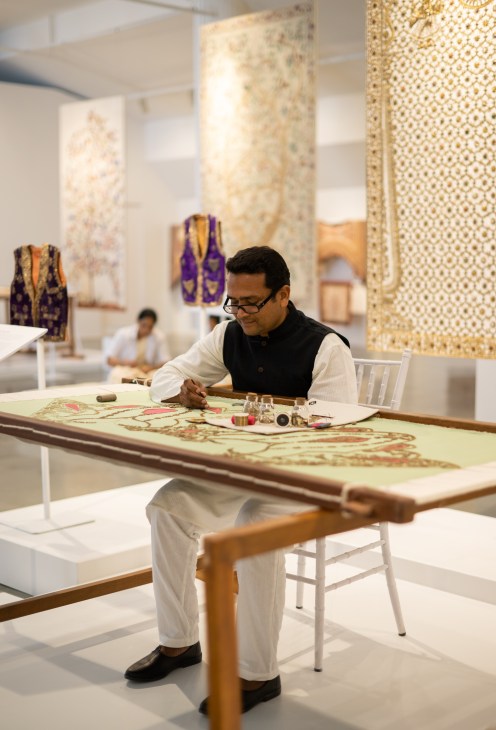

Artists themselves are opening many of the new residencies – especially in Africa, where growing international interest has created a generation of successful artists, some of whom are giving back by bolstering infrastructure for the arts in places with little support. Kaloki Nyamai launched the Kamene Art Residency in Nairobi. In Ghana, Amoako Boafo inaugurated Dot Ateliers in Accra. Ibrahim Mahama opened the Savannah Centre for Contemporary Art in Tamale. Kehinde Wiley, the star American artist of Nigerian descent, launched his Black Rock residence in Dakar, Senegal.
As the cities where artists concentrate have become more expensive to live in, residencies serve the function of providing time for creation, exchange with fellow artists and an escape from the demands of ordinary life. “These are experiences that help artists to rapidly grow their practice or explore a new direction and it’s exciting to be a part of that,” says Palazzo Monti’s Edoardo Monti. In the current property market, the days of converted factories in urban centres providing cheap homes and studios for artists have disappeared – as have galleries that can gamble on experiments. The new hubs of art creation are now spread all over the world, in family palazzos, rural cottages and other reinvented spaces.
Now the trend is expanding from the art world to the design industry. In India, the Shakti design residence (pictured) launched last year with a mission to promote Indian craft and bolster the country’s artisans. Designers from abroad are selected by a panel that includes Milanese gallerist Nina Yashar. The chosen group then spends a month between Jaipur and New Delhi working with artisans to develop collectable design, mentored by the likes of Swiss designer Yves Béhar and Polish designer Marcin Rusak. Shalini Misra, the architect who founded Shakti, hopes that designers gain “insight into the breadth and depth of craft in India, and understand it through the lens of the contemporary design world.” Shakti is not, she says, designed to be a one-way street but “to create new design languages that inform both the work of the designers and of the Indian artisans and collaborators they work with”. A residency offers the unique chance to bring together both the creatives and the makers. “Time spent together is the best way to do that,” says Misra.
In need of a distinct look for your staff? These designers have you covered
In 2013, Letizia Caramia and Morten Thuesen are the co-founders of Older Studio, an Italian and Danish company specialising in uniforms for institutions such as Cassina and Tate Modern, as well as hotels including Chateau Marmont and The Hoxton. The couple have since carved out a sartorial niche, sourcing materials from Italy and keeping manufacturing in Europe. The studio also makes furniture.
When Monocle meets Caramia and Thuesen at their Milan headquarters, both are wearing beige-and-black outfits incorporating prototypes made for the pool staff of Hotel Belvedere Bellagio in Como. “These shorts are my daily uniform at the moment,” says Caramia, who is pregnant, adding that Prada mules are her go-to choice for comfy shoes. She pairs these with an Aino gilet made from upcycled fabrics. Thuesen, meanwhile, wears pieces from Older Studio’s recent collaboration with Japan’s Facetasm. “At the moment, my head is in the Tokyo streetwear space,” he says. “I like to layer and play with big proportions.” Nike trainers lift the silhouette while keeping him comfortable.
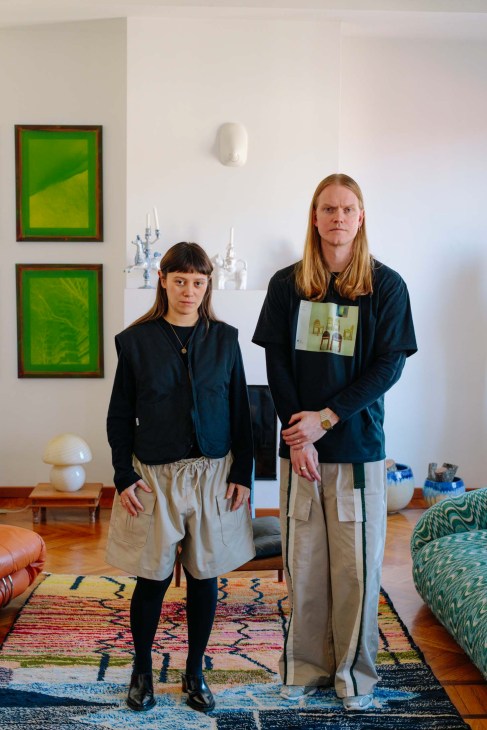
When it comes to their daily uniforms, Caramia and Thuesen prioritise utility but they choose jewellery for its sentimental value. Both wear rings that they designed themselves to symbolise different members of their family, made from Danish gold that has been melted down and crafted into shape in Tuscany. Caramia wears a bespoke necklace by Italy’s Panconesi, a gift from when she gave birth to their son.
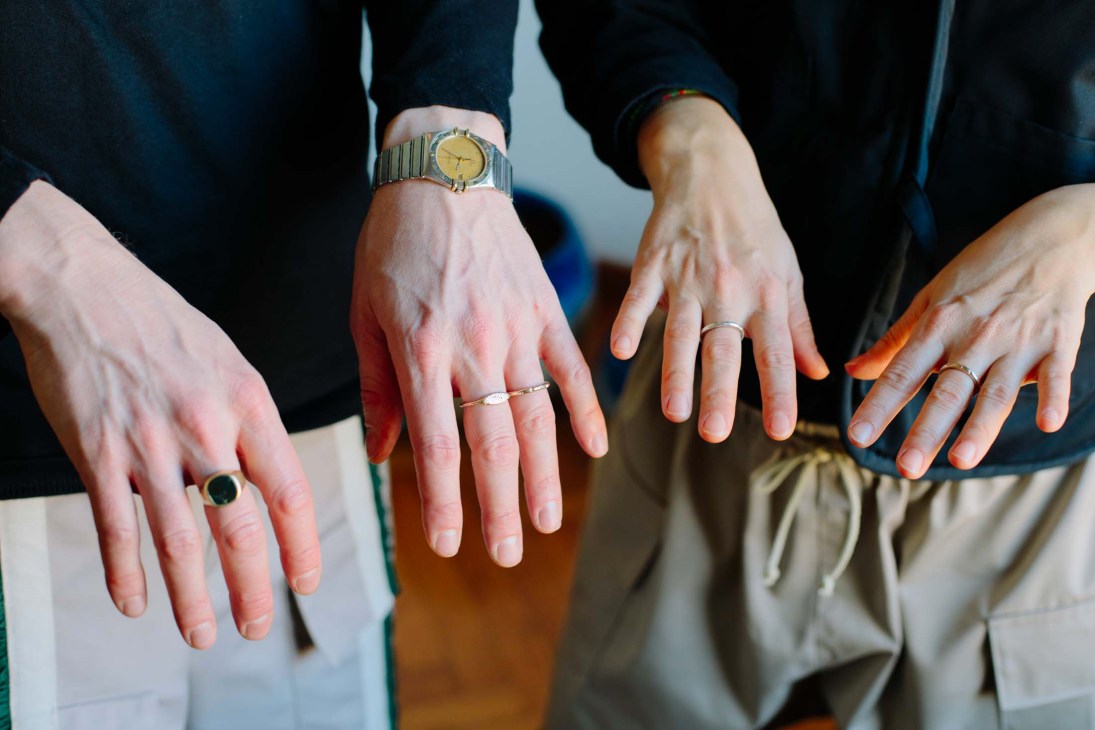

The city of Milan, where the art of la bella figura is taken to an extreme, also inspires the couple’s style. “I love how people here make an effort,” says Thuesen. “There is a level of dedication to a complete look that I admire. It’s often executed down to the socks.”
olderstudio.com
Dubai Design Week is providing a creative launchpad for the wider Gulf region
Architects working in rapidly developing regions such as the Gulf often adopt the dominant design language of the time. In Dubai, the result has been that much of its newer architecture has a Western feel (landing at DXB, you’re immediately confronted with ads for Italianate developments overlooking the Creek).
“In the Gulf there was a period of rapid development that leaned on imported systems and aesthetics,” says Natasha Carella, director of Dubai Design Week, whose next iteration runs from 4 to 9 November. “But vernacular approaches such as wind towers, coral stone, palm fronds and earth-based construction never entirely disappeared. It’s now less a revival, more a rebalancing – and that’s a shift we’re committed to helping accelerate.”
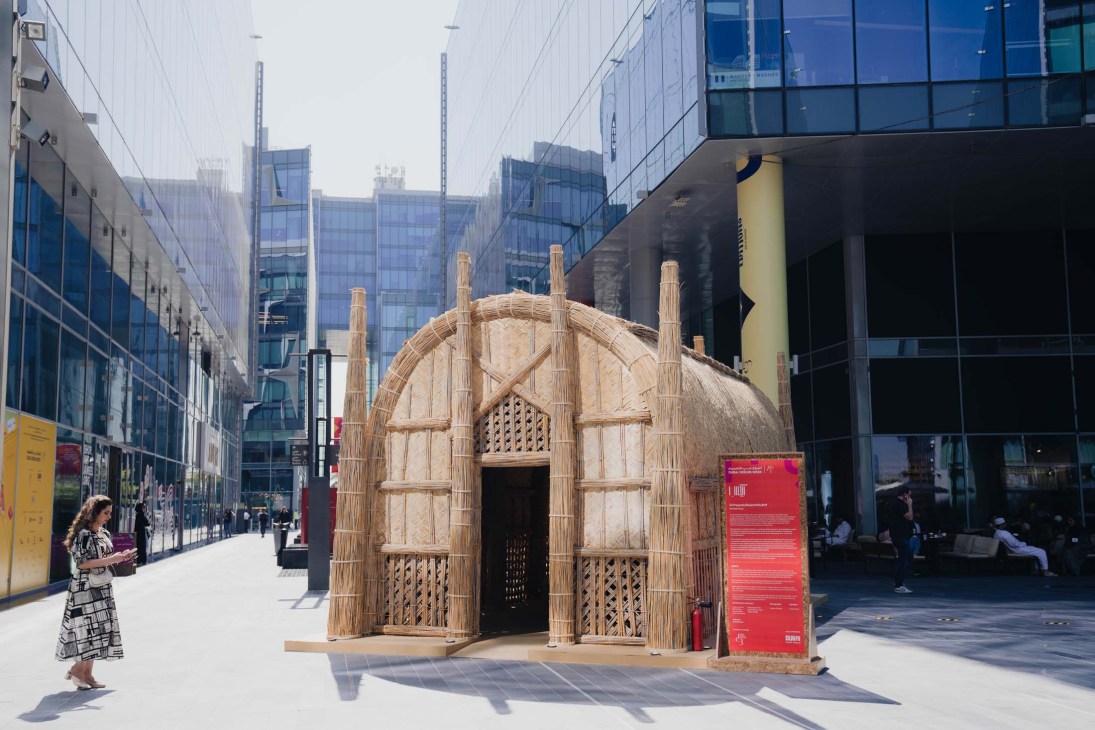
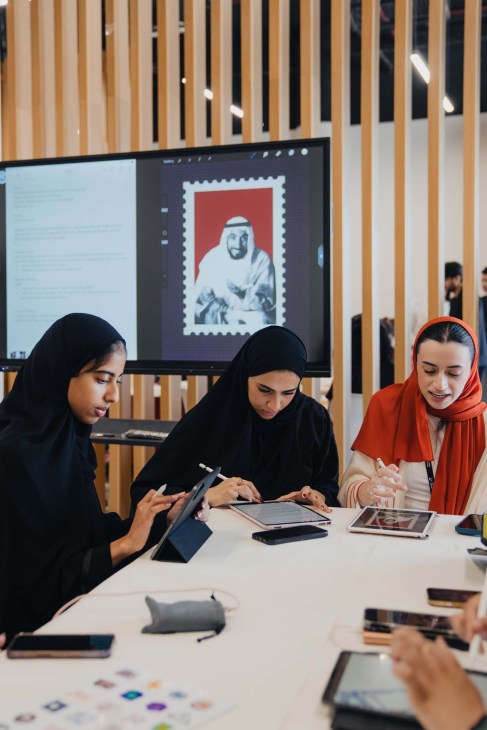
Launched in 2015, Dubai Design Week has grown into one of the region’s most important events, showing work by more than 500 creatives – much of which is rooted in and inspired by local geographies. For example, Iraq-based architect Ola Saad Znad has created a bespoke pavilion for the most recent iteration. “A Present/Absent Mudhif” is inspired by houses found in the marshlands of southern Iraq and made from reeds using traditional techniques.


Also on show, in 2024, was the Stoot Pavilion, designed by UAE-based studio MULA (in collaboration with Swiss building supplier Oxara) and constructed from a cement-free, low-carbon binder made from waste material. “Both projects are rooted in specific geographies,” says Carella. “But they also speak to global issues around sustainability, housing and the politics of materials. That’s precisely why platforms like Dubai Design Week exist: to amplify the breadth of design intelligence coming from these geographies and to challenge what is typically considered innovative or contemporary in design.”
As average temperatures across the globe continue to rise, expect Dubai Design Week to grow in relevance as more people look to the Gulf for inspiration.
Interview: Future Impact curator Hunn Wai on showcasing Singaporean design in Milan
At its best, Milan Design Week serves as a forum for championing the best design from many countries. A case in point is Future Impact 3: Design Nation, backed by the DesignSingapore Council, which showcases works by Singaporean designers who have dreamt up forward-looking solutions to pressing global challenges. Its third edition, co-curated by designer Hunn Wai of Singaporean studio Lanzavecchia + Wai, is being presented during Salone del Mobile. Here, Wai tells us about the two complementary showcases within the exhibition.
How does it feel to be Future Impact’s first Singaporean co-curator?
Twenty years ago, I was in the first batch of designers to be awarded an overseas scholarship by the DesignSingapore Council, which enabled me to pursue a master’s degree at Design Academy Eindhoven. Having established a career between Singapore and Milan, this is my opportunity to present the Lion City’s brilliance to the world—not just as an observer of how its design has evolved but as an active contributor. It’s a profound, full-circle moment for me.

Tell us about the two showcases. Why is their inclusion important?
Both speak of design as a force of transformation, where we have a chance to shape the world. Little Island of Brave Ideas shows how design has played a critical role in the tiny country. Virtuoso Visionaries gives an international stage to young design graduates. While this nation has tended towards practical solutions, these rising designers are today exploring notions of post-pragmatic design.
Why is Milan Design Week important to Singapore?
It has expanded beyond a commercial fair and become an epicentre where global design conversations happen. It’s both a stage and a testing ground for Singapore, where we get a chance to tell others about our distinct design voice but also stand up to the scrutiny of the world’s most discerning audience. While Singaporean design might not have a recognisable style, like the Japanese or Scandinavians, the next wave of local designers are hyper-connected talents who embrace complexity and aren’t afraid to challenge conventions. We’re entering into an era when Singaporean design isn’t just functional but thoughtful, poetic, and global in outlook.



